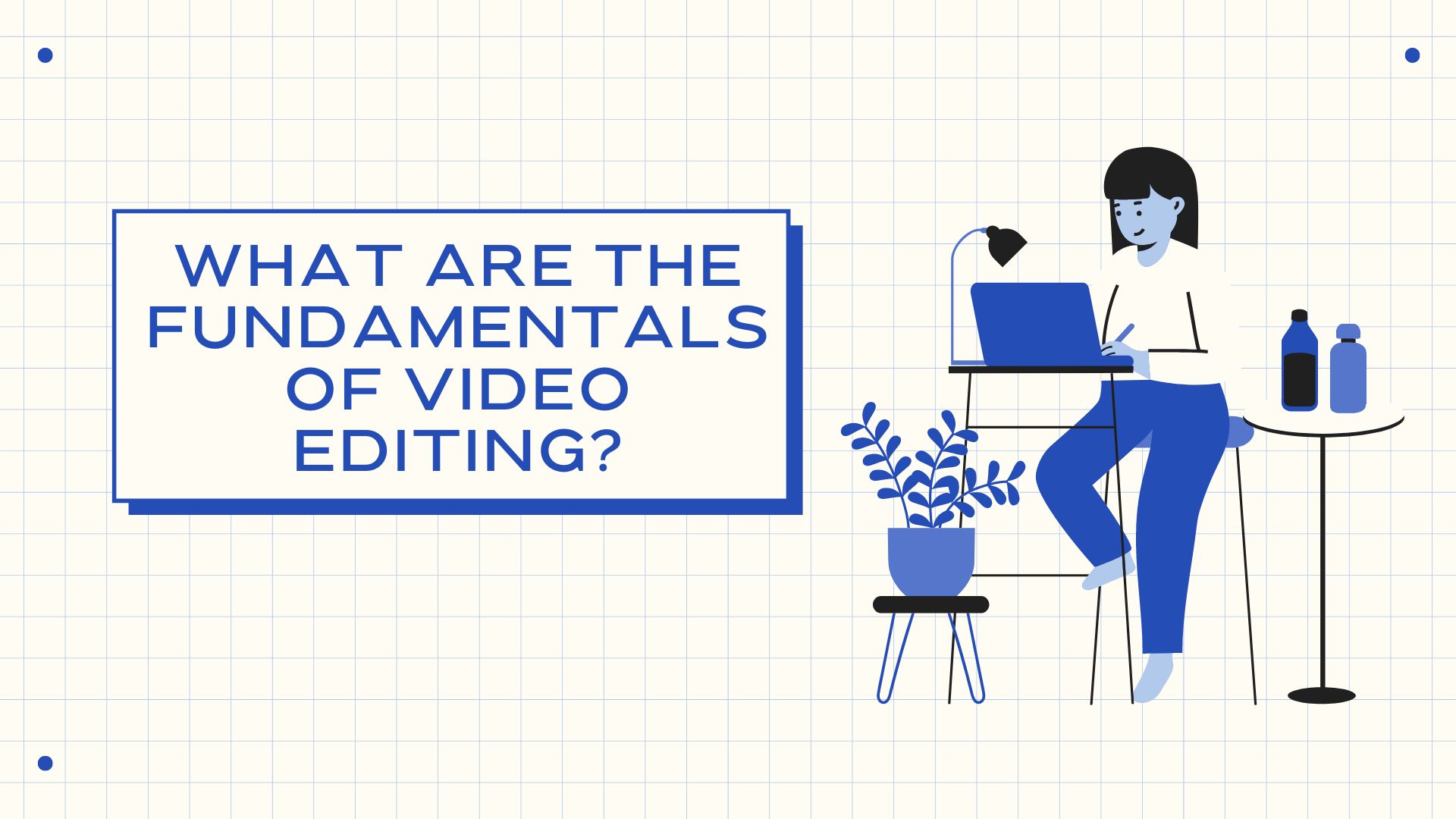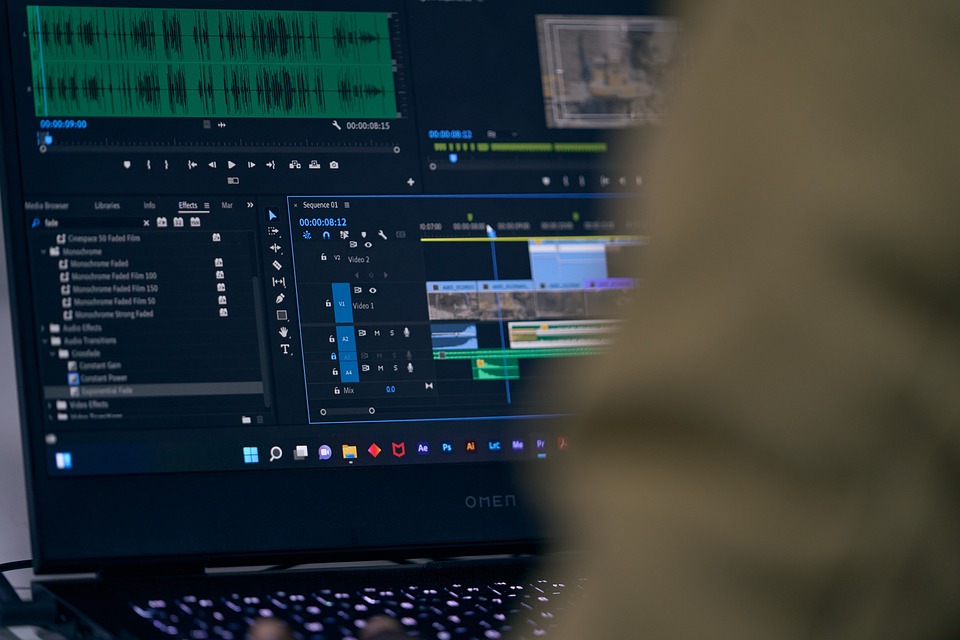You are now all set to begin creating your first video. Perhaps you would like to begin a new hobby, become a YouTube sensation, or perhaps have a new career. Of course, there are many steps involved in producing a video, but fortunately, there is a wide range of free video editing software available, from simple to extremely complex.
It's time to create your video after you've finished recording all of your individual video clips. But where should we begin? Although the editing stage of your video creation process may be the most crucial and time-consuming, it might be scary. So this is when you artistically edit all that video into something that will hopefully be entertaining and even go viral.
Editing doesn't need to be difficult. Use this checklist to make sure you've completed all the necessary procedures.
The Fundamentals Of Video Editing
Today, there are many different types of free video editing software accessible. So how can you choose the best one? Check out this quick and dirty guide for all the fundamentals of video editing you'll ever want, and your blockbusters won't ever be late again.
1. Create A Compelling Script
Having a strong script is essential if you wish to keep audiences' interest. The ideal script will vary depending on the kind of video you plan to produce. Uncertain about what that is?
A strong script should:
- Establish goals that are specific to your audience. What do you wish your video to achieve? Exactly who will watch it? You can communicate your message more compellingly if you are certain about the video's goal.
- Concentrate on one idea at a time - Determine the main point of your film and keep your attention there. Then, by focusing on one theme or issue at a time, you may produce a shorter, more instructive video.
- Engage your viewers in conversation - A video is a kind of conversation. Therefore, when composing your script, consider the questions, sentiments, and thoughts that the audience may be experiencing and answer them.
2. Choose The Appropriate Color Combination For Your Videos
Our emotions and perception are directly impacted by color. In addition, our perception of color is influenced by our upbringing, interests, cultural background, and experiences. Because of this, it's crucial to consider your audience while choosing the colors for your video.
If your understanding of color theory is hazy, how can you put together an appealing palette? Don't worry! Tools are available for it. But before that, let's quickly review the two primary color schemes you'll encounter when creating a video.
- RGB - All electronic displays employ this color scheme, which is how you see colors on your smartphone, tablet, and television. Green, Red, and blue are the three primary hues employed here.
- HEX - RGB colors are represented by six-digit numbers called hex codes on screens. Because they are the standard for the web, hex codes are used in Biteable. Six numbers and letters accompany a hash to form a hex code, such as #23f4a3.
3. Use High-Quality Images
Making the appropriate image choices for your film is crucial to its success. In addition, you must use high-resolution images if you want your video to be noticed.
RGB and HEX were already mentioned and are somewhat interchangeable, but CMYK is a color profile used for printing. Therefore, you must change it to RGB if you see it. To alter the color profile, use a program like Photoshop (or its free, open-source twin GIMP).
If you want to alter the size and resolution of your images, Photoshop or Gimp are also required. Although you could be asked for resolutions like 1920 x 1080 or something a little strange like 1292 x 1094 when uploading images to Photoshop or Gimp, you can choose based on your needs.
4. Set Up The Sound
Every good video has background music, so awkward silences shouldn't be included in your small-screen production unless they're meant to increase suspense. If the audio or sound is excellent, the majority of us will tolerate a film with lower-than-HD quality. In the end, if your sound doesn't work, your video won't become very successful.
You have two primary options when creating your own video: you can either upload your own narration or add some fantastic music. Use of music that you do not own the rights to is strictly prohibited; the risk of legal action is simply too great. On the other hand, if you want to do something new, including a voiceover can aid in telling an engaging story.
5. Understanding Video Formats
Videos are available in a wide range of formats, just like various text documents. The video format you choose to export your animation in will have a direct impact on how you publish the final product.
Various video file formats work in a variety of ways; your file will include a "container" that houses all the data on the audio and video components, as well as any synchronization and subtitling metadata. Additionally, the software in which your video is played contains a "codec" that may access your compressed video.
Though many video platforms currently support a variety of formats, it is best to investigate which ones are available. Flash Video (.flv), Windows Media Video (.wmv), QuickTime and WebM (.webm), are a few common examples of video formats (.mov).
6. Organize the video content you have.
It's time to categorize your video clips and have them safely stored on your device once you've imported them. Create a folder for your project and a subfolder for all the unprocessed, raw files you just moved. Your savings in time will be repaid to the company. Don't forget to give your files meaningful names so you can identify the sequence you want to produce.
It's also helpful to get rid of any unnecessary takes at this point; simply save the best iteration of each shot to speed up editing. Be brutal! Your project may suffer from a number of issues, including bad camera angles, low audio quality, and awkward speech delivery.
7. Marketing Your Video
It's time to show your video to the appropriate audiences now that you've finished it.
Your video can be used for a multitude of various uses.
- Incorporate video into emails - Emails continue to be one of the finest methods to connect with your audience, and including video in it can boost click-through rates and engagement.
- Include a video on your landing page - Using it boosts conversion rates by 80%. In addition, it enables you to establish a personal relationship with the visitor immediately.
- Post your video on social media – Video content on social media receives more likes, shares, and comments. So please don't be shy about using it! You're unsure of your followers' interest. According to HubSpot, 83% of customers will share a brand's video if customers find it engaging or useful.
- Run video advertisements. Video ads often perform better, and most social media networks now support them (even LinkedIn!).
You need to store a video somewhere to use it in a promotional campaign, of course. Both YouTube and Vimeo are excellent starting points. However, if these two don't excite you, there are a tonne of other possibilities for video hosting.
Conclusion
The most crucial step in creating a video is editing. Therefore, don't take angles when putting your final cut together. However, making a film that is entertaining to watch need not be difficult. You can get people to pay attention to what you have to say with a compelling narrative, eye-catching graphics, and a pleasing color palette.

